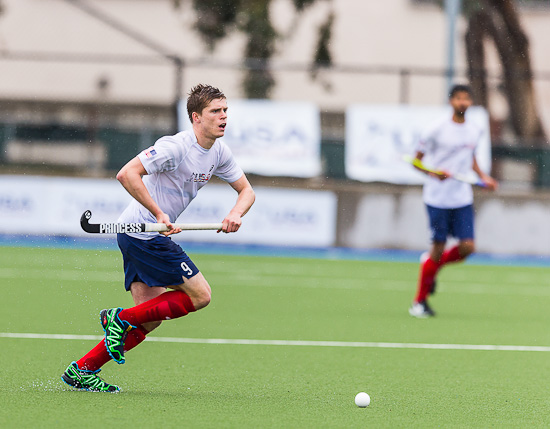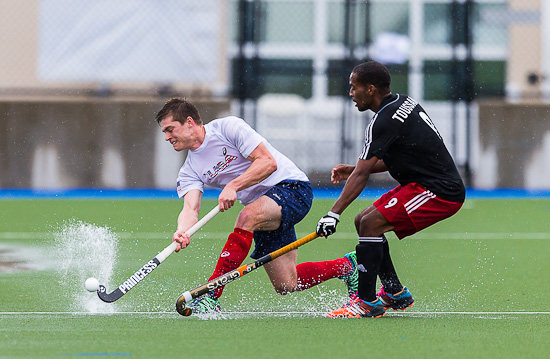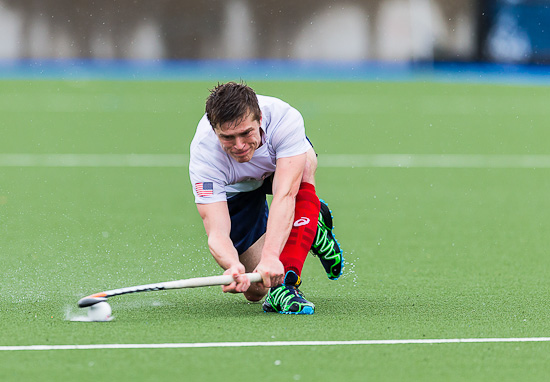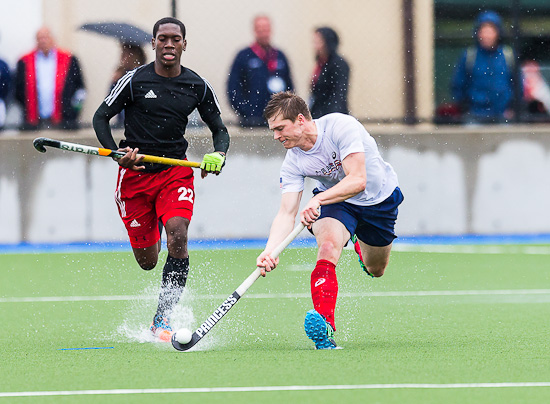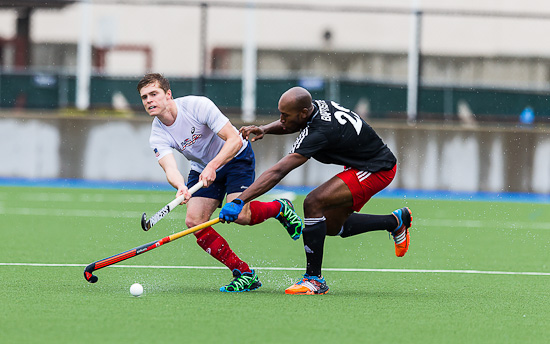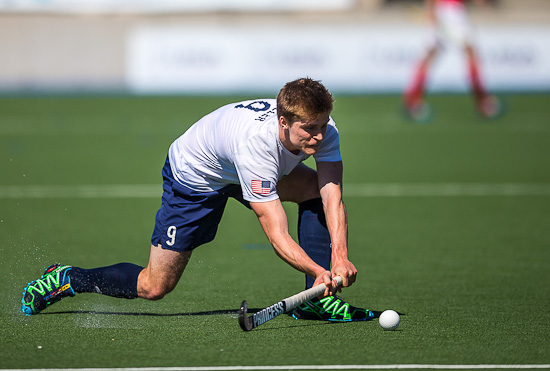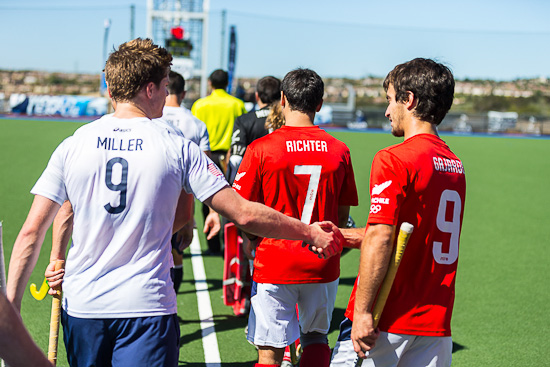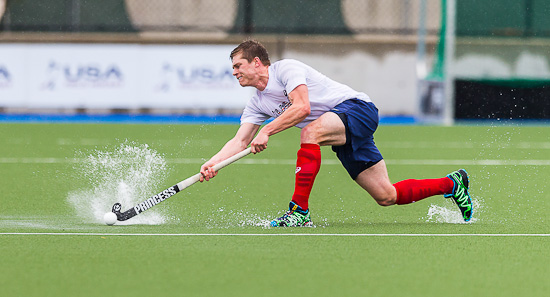
Adam Miller is on his second helpings when it comes to international duty. The 23-year-old played hockey for England at junior level, representing the country at U16, U18 and U21, but then he decided to throw his hat in the ring for Team USA, courtesy of his dual nationality. The defender now has 30 caps to his name and is already feeling very much at home among his new teammates.
Miller made his debut for Team USA last year, playing in a series of test matches against Mexico, Chile and Argentina. Looking back he says those test matches were the best hockey experiences he has enjoyed so far and his declared ambition is to play in an Olympic Games as a member of Team USA.
We caught up with Miller with just a month to go before the members of Team USA meet up to begin final preparations for the Pan American Games in July. He talked us through what life as an elite athlete entails.
“I am currently based in Cambridge, in the East of England. A typical day for me starts at 6am as I have to commute into London for work. I train every evening after work. Mondays, Wednesdays and Fridays are spent in the gym. These sessions are planned out by Pete Gorka, (Team USA’s strength and conditioning coach), and I try and keep these as varied as possible. Following injuries in the past few seasons, my primary focus in the gym has turned to robustness and injury prevention. While I do focus on strength work as well, I am ultimately no good to the team if I’m injured, so this is my main focus.”
Fitting training into a busy work schedule will play its toll on any athlete’s performance, and Miller is conscious that he needs to eat the right things to get the optimum performance during training. Before leaving the house for his hours’ commute into the capital, he will eat a large bowl of porridge with Greek yoghurt, brown sugar and blueberries. This is accompanied by a protein shake on route to work, and later in the morning he will eat a snack such as fruit, nuts or crackers.
All the athletes are advised by the USOC Sports Nutrition Team, and Miller says one of the nutrition team’s favorite snacks is the almond butter granola snack. With almonds recognized as a good source of vitamin E, protein and fiber, this snack is thought to help the athletes maintain good bone health and recover quickly from injury. With his own history of injuries, protein is high on Miller’s dietary requirements, he eats more protein based food in the afternoon and will have a protein shake with his evening meal.
Living and working in England means that Miller has to do much of his training by himself or with teammates from his club side. He explains what his current training workload looks like.
“The lead up to the Pan American games is unfortunately in the off-season in England which makes it difficult to get regular team training. I get on the pitch every Tuesday and Thursday, where I will complete a MAS session (Maximal Aerobic Speed) which is dictated by my 30:15 score (this is a fitness test which calculates the cardiovascular fitness of sports players. It measures the athlete's ability to recover quickly after a burst of high energy activity. It is designed to provide fitness measures in specific sports which incorporate a lot of stop/start action, such as hockey), before practicing basic stick skills on my own or more complex drills with any friends that fancy coming along. Our team philosophy in build up to the Pan American Games has been “No Off Days”, and so every day I will do 30 minutes of maintenance such as stretching, foam rolling and core exercises. Come June I will join the squad for full time training in preparation for the Pan American games in July.”
A common theme with Team USA hockey players, both males and female, is the importance of being part of the team and always putting team first. Miller is no exception: “Our main aim when we play matches is for every individual to understand their own role within the team. Then our only individual aim is to take care of that role and that role alone. It is our belief in the squad that if we play for the team, with every individual taking ownership of their role, then we will succeed. No level of individual training or training away from the squad can prepare you to know your role and how to play it within the team. This is why being around our teammates in preparation for a competition is hugely important. Plus it’s the main reason why team sports and particularly playing for this squad is so much fun.”
When you spend a lot of time in the company of your teammates, you do become like an extended family. Miller says that when it comes to discussing worries, fears or personal matters he feels that he can trust anyone of his teammates or coaches. “The squad is extremely supportive, honest and open to each other… almost too open,” he laughs. “This has definitely been something that has developed naturally by spending a long period of time chilling out together in San Diego last summer, but we’ve also practiced having open and honest discussions in our team meetings.”
Despite living in Cambridge and working in a nine to five job, Miller still feels that his life as an athlete can take on a ‘bubble-like’ quality. This is common among athletes, who feel they are living an existence that is some way removed from everyday life. Going out with mates, enjoying a few beers and leading a busy social life do not go hand in hand with the lifestyle demands of being an elite athlete. Miller concurs: “I do sometimes look out of the bubble and feel the rest of the world is going on. It is the only thing that makes playing field hockey difficult for me. There are lots of reminders every day that I am missing out on things that my friends and work colleagues are doing.
“But ultimately I’ve set myself personal goals for hockey, and as a squad we’ve set our team goals, and I’m pretty determined to throw everything I have at succeeding at them. So I would say, that rather than being scared of what life is like without hockey, I look forward to doing some of the things I’ve missed out on when I am unable to play anymore.”
The Team USA coaching staff work hard to ensure their athletes are enjoying their time in the ‘hockey bubble’. While not formally labelled ‘team building exercises’ the whole squad will do ‘normal’ things together such as going to restaurants, golf courses or the beach. “A particular favorite is when we watch Top Gun before a tournament, I would probably back teammates Mo Gandi and Mikey Barminski to recite the whole film,” says Miller.
When it comes to the serious matter of a match day, Miller says he has now established a routine that he is happy works for him. As a self-acknowledged hot head, he says that he still needs to work on keeping his emotions in check, but a good pre-match routine is all part of the process.
“I got into a pretty decent routine last summer when preparing for the test matches against Argentina, Chile and Mexico. I try and keep to this as far as possible as I know it works for me. I aim for about nine hours sleep, waking up at least four hours before a match. Ideally, I like to do some muscle activation work in the gym which wakes me up and gets me mentally focused from the get go. I’ll then have a pretty big breakfast of porridge, eggs and fruit. Some people don’t like to eat too much but I hate being hungry before a game. Usually breakfast is followed by a team meeting, after which I then plug in my headphones and blare out disco whilst doing exercises such as stretching, band exercises and foam rolling. I’ll have a coffee and some snacks about an hour before the match and will run through in my head our chosen tactics.
